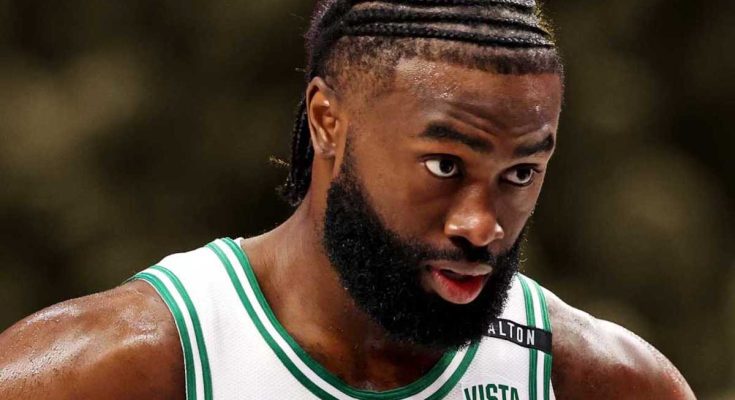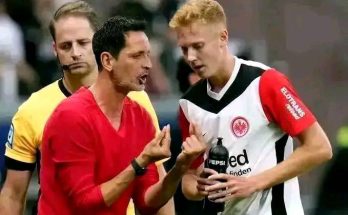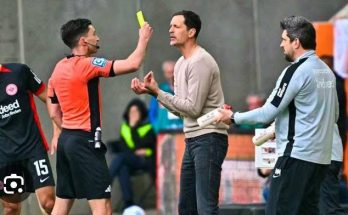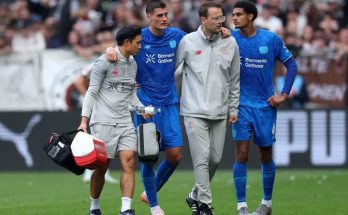The world of professional basketball, particularly the NBA, is a dynamic and often ruthless landscape where careers can pivot on a single decision. For every soaring dunk and buzzer-beating three-pointer, there’s an intricate web of roster management, financial implications, and player development that often goes unseen by the casual fan. This week, the Boston Celtics, fresh off their 2024 NBA Championship victory, made a move that, while seemingly minor in the grand scheme of their championship aspirations, offers a fascinating glimpse into the complex mechanics of team building: they announced the waiving of former Alabama Crimson Tide standout JD Davison, bringing an end to the guard’s three-year stint with the franchise after being selected 53rd overall in the 2022 NBA Draft.
On the surface, it might appear to be a straightforward transaction – a team cutting a player. However, delving deeper into Davison’s journey and the context of the Celtics’ decision reveals layers of strategic considerations, the challenging reality for fringe NBA players, and the ever-evolving role of the G-League as a developmental incubator.
JD Davison entered the NBA draft highly touted. Coming out of Calhoun High School in Letohatchee, Alabama, he was a consensus five-star recruit and one of the top point guards in the 2021 class. His athleticism and explosive playmaking ability garnered significant attention, leading many to project him as a potential lottery pick after a “one-and-done” season at the University of Alabama. While his freshman year with the Crimson Tide, where he averaged 8.5 points, 4.8 rebounds, and 4.3 assists per game, was solid enough to earn him a spot on the SEC All-Freshman Team, it perhaps didn’t fully live up to the sky-high pre-college expectations. This perceived “underwhelming” freshman year likely contributed to his slide in the 2022 NBA Draft, where the Celtics ultimately scooped him up with the 53rd pick in the second round.
Being a second-round pick in the NBA immediately places a player in a precarious position. Unlike first-round selections, whose contracts are often guaranteed for a certain number of years, second-rounders typically sign non-guaranteed or partially guaranteed deals, or more commonly in recent years, two-way contracts. This was the case for Davison, who signed a two-way contract with the Celtics on July 8, 2022.
The two-way contract, introduced in the 2017 offseason, was designed to bridge the gap between the NBA and its developmental league, the G-League. It allows teams to carry up to three additional players beyond their standard 15-man roster, providing them with more flexibility for player development. Players on two-way contracts spend the bulk of their season with the G-League affiliate but can be called up to the NBA team for a limited number of games. Originally, this limit was 45 days, but it has since evolved, allowing players to be on the NBA team’s active list for up to 50 games during the regular season, without accruing “Days of Service” that count towards NBA experience. This system offers a higher salary than a typical G-League contract while keeping the player tied to a specific NBA franchise, offering a clear pathway to the big league if they perform well.
For Davison, his time with the Celtics organization largely unfolded in the G-League, playing for the Maine Celtics. This is precisely the intended purpose of the G-League: to serve as a laboratory for player development, a place where young prospects can refine their skills, gain professional experience, and adapt to the nuances of the NBA game without the immense pressure of regular-season NBA competition. The G-League is not merely a holding pen; it’s a crucial ecosystem that prepares players, coaches, officials, and even front-office staff for the NBA. Its expansion over the years, with most NBA teams now having a dedicated G-League affiliate, underscores its importance in the modern basketball landscape.
And Davison certainly maximized his opportunities in Maine. While his NBA playing time was limited – just 36 appearances over three seasons, averaging a modest 1.9 points, 0.9 assists, and 0.9 rebounds in about 5.5 minutes per game – his G-League performance was nothing short of stellar. In the 2024-25 season, he truly broke out, earning the prestigious NBA G-League MVP award. His averages of 25.1 points, 7.6 assists, and 5.3 rebounds in 30 games for the Maine Celtics demonstrated a significant leap in his offensive game and overall court vision. He led the Maine Celtics to the No. 3 seed in the Eastern Conference in the 2025 NBA G League Playoffs, showcasing his ability to be a primary ball-handler and impact winning at that level.
Furthermore, Davison was part of the Boston Celtics squad that triumphed in the 2024 NBA Finals, earning him an NBA championship ring. While his on-court contributions to the NBA team’s championship run were minimal, being a part of that experience, soaking in the atmosphere, and witnessing the daily routines of an NBA champion up close, is an invaluable experience for any young player. It provides an understanding of the culture, work ethic, and intensity required to succeed at the highest level.
Given his G-League MVP season and the Celtics picking up his non-guaranteed team option for the 2025-26 season just a month prior to his waiving, the decision to cut Davison might seem counterintuitive at first glance. The option, worth $2.27 million, was non-guaranteed, meaning the Celtics were not committed to paying him that full amount unless he remained on the roster past a certain date. The timing of the waiving, however, points to the intricate dance teams play with the NBA’s collective bargaining agreement (CBA) and, specifically, the luxury tax and its increasingly restrictive “aprons.”
The NBA employs a soft salary cap, meaning teams can exceed the cap if they pay a luxury tax. However, the new CBA has introduced two “aprons” above the luxury tax line, which trigger increasingly severe penalties and restrictions on team building. The second apron, in particular, imposes significant limitations on how teams can operate in terms of acquiring players, using exceptions, and even engaging in trades. For the 2025-26 season, the second apron is set at $207.8 million.
The Celtics, as a championship contender with a roster laden with high-salaried stars like Jayson Tatum, Jaylen Brown, Jrue Holiday, and Kristaps Porzingis, are perpetually navigating the complexities of the salary cap and luxury tax. Getting under the second apron has been a stated objective for Celtics President of Basketball Operations Brad Stevens this summer. Waiving Davison, even with his impressive G-League resume, allowed the Celtics to dip approximately $2 million under the second apron. This seemingly small amount of cap relief can have massive implications for a team’s flexibility in future moves, allowing them to utilize certain exceptions or avoid harsher tax penalties and restrictions that come with being over the second apron. It’s a strategic move, prioritizing financial flexibility and long-term roster management over retaining a promising, but currently non-essential, developmental player.
This highlights a critical reality for players like Davison: even when they excel in the G-League, securing a consistent role on a championship-contending NBA team is incredibly difficult. Teams at the top of the league prioritize proven talent and fit for their limited roster spots, especially considering the financial penalties associated with going deep into the luxury tax. For a player who hasn’t yet consistently translated their G-League dominance into impactful NBA minutes, they often become a casualty of roster optimization.
The decision also reflects the depth and talent in the Celtics’ guard rotation. With Derrick White and Payton Pritchard as established contributors, along with other potential backcourt additions or existing players who can slide into guard roles, the pathway for Davison to earn significant minutes was narrow. The Celtics’ recent acquisition of players like Anfernee Simons and Georges Niang (who are themselves being discussed as potential trade candidates) further illustrates the ongoing churn and evaluation of talent within the organization. Every roster spot is a valuable commodity, and every dollar counts.
So, what happens now for JD Davison? Being waived doesn’t mean the end of his NBA dreams; it simply means his journey with the Boston Celtics has concluded. He now becomes an unrestricted free agent, free to sign with any NBA team. Given his G-League MVP performance, it’s highly probable that other NBA teams will take a long, hard look at him. Teams that are in a different stage of their competitive cycle – perhaps rebuilding or looking to develop young talent – might be more inclined to offer him a spot, potentially another two-way deal or even a non-guaranteed standard contract, with a clearer path to NBA minutes.
The waiver process itself is a standard NBA procedure. When a player is waived, they remain on waivers for at least 48 hours. During this period, other teams can place a claim on the player, assuming their current contract. If no team claims them, they clear waivers and become an unrestricted free agent. In Davison’s case, with a non-guaranteed contract for the upcoming season, the financial liability for any claiming team would be minimal, making him an attractive low-risk, high-reward option.
The impact on Davison’s financial situation is also worth noting. Since his 2025-26 salary was non-guaranteed, the Celtics are not on the hook for that full amount now that he has been waived. Had his contract been fully guaranteed, the Celtics would still be responsible for the salary, which would count against their cap, though they could potentially “stretch” the cap hit over multiple years. This is another reason why teams often opt for non-guaranteed deals with developmental players.
For Davison, the objective remains the same: prove he belongs in the NBA. His G-League MVP season is a powerful statement of his potential and development. It signifies that he has refined his game, improved his decision-making, and can consistently perform at a high level. He will likely look for an opportunity where he can continue to develop and, crucially, receive more consistent NBA minutes to demonstrate that his G-League success can translate to the big stage.
Many players who are waived go on to have successful NBA careers, sometimes with the same team that waived them later down the line, or more often, with a different franchise that offers a better fit or a clearer opportunity. The NBA landscape is constantly shifting, and a player’s value can change dramatically based on team needs, injuries, or unexpected roster openings. The G-League also serves as a showcase during events like the G-League Winter Showcase, where all teams converge to scout talent, providing another avenue for waived players to impress.
In essence, the waiving of JD Davison by the Boston Celtics is a microcosm of the continuous evaluation and difficult decisions inherent in professional basketball. It’s a testament to the Celtics’ ruthless efficiency in managing their roster and financial commitments, even if it means parting ways with a talented young player who has shown immense growth. For Davison, it’s not a setback but a new chapter, an opportunity to find a new home where his G-League MVP talents can potentially blossom into a more permanent and impactful NBA role. The journey of a professional basketball player is rarely linear, and Davison’s story is a compelling reminder of the dedication, perseverance, and adaptability required to navigate the highs and lows of a career in the world’s premier basketball league. His next move will be keenly watched by those who recognize his potential, and it serves as an educational moment for all who seek to understand the intricate machinery behind the glamour of NBA basketball.



